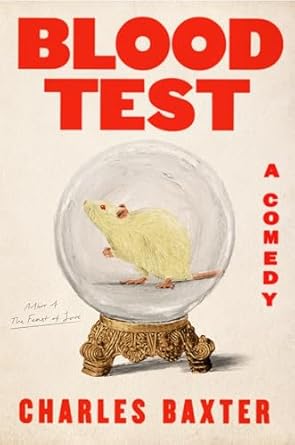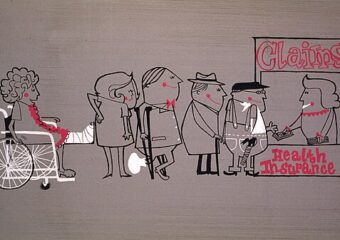We humans have always sought ways of seeing our futures, always searching for that crystal ball. And though we have also been warned that seeing our futures could affect them, and adversely in many cases, we still seek them. Among the futures we have sought are those of our health and our behaviors. At first, only outward signs of diseases and behaviors traceable to heritable traits were available for those purposes. The biosciences, behavioral sciences, technology developers, and the algorithm-industrial complex are endeavoring to develop additional methods for improving visibility of future events. These methods have included psychological and behavioral instruments, and laboratory detection and characterization of physiological and pathological processes, which now encompass the genetic basis for them as well.
Until very recently, synthesizing future events from these individual components was left to human intellect and imagination. Artificial intelligence has arrived with the promise of algorithms that can integrate these components into accurate predictions of health and behavioral events and their consequences. A recent novel, Blood Test, by Charles Baxter conjures the effects on a family from such a test on one of its members, many of which are unintended, unanticipated, and unwelcome.
The Novel

The first-person narrator and primary character, Brock Hobson, sits at a desk most days working as an insurance agent. He begins noticing a pain in his side as if someone is stabbing him, “but carefully and gently probing for an organ or two.” (p. 4) He goes to see a doctor about it. The doctor orders some tests and writes some prescriptions for him. But, while the doctor has Hobson’s attention, she mentions a patient she just saw who stabbed himself in the leg. Interestingly, she notes, the patient had very recently submitted to testing that predicted he would do just that, stab himself in the leg. The doctor went onto say that the medical practice she is part of has a relationship with the “start-up company” that created this test, and that she can order it for her patients. When Hobson presses his doctor on what exactly the test offers, she’s hesitant, but then explains.
What it does is, it predicts behavior, tells you what you’re going to do before you do it, based on the…arrangements in your genetic structure, your psychology, and your past and your what-have-you. Plus your faith history. Plus how you fill out the questionnaire. Plus who knows what. Your internet purchases and browsing history—things like that. With these computers, and the fancy algorithms, and the way you answer their questions and stuff, they can get very specific. There’s nothing these mainframes don’t know. They can figure out anybody. (p. 7)
“I’ll do it.” (p. 8)
This is how the novel begins. Hobson soon learns his future is quite different than anyone who knows him would expect. Although he is a person whose children think of as predictable and boring as a metronome, the testing company tells him he is “about to embark on a major crime wave” according to the test results. (p. 33) After additional analysis, the company further informed Hobson, “We see more violence in your future…We see a murder. Committed by you. We see some fatality.” (p. 89).
The company advises Hobson, that “given the conditions and predictable outcomes, you should buy some insurance from us. For lawyers, and medical expenses.” (p. 88) Later, their alarm grew greater and they advised he buy a particular handgun from them, “at below cost.” (p. 104) Even though Hobson realizes that this is all a scam, the results nevertheless haunt him; could it be true after all? He buys the insurance and the gun. The story as it plays out is modestly madcap and billed as a comedy. In some ways, however, it serves as a view towards the near future of medical technologies used in conjunction with algorithms, and offers some cautions about adverse consequences that could come of them.
Light Reading, Heavy Implications
Novelists can be quite prescient about particular future events. Their speculative fiction has been known to become reality. Baxter’s novel portrays a scenario closer to transitioning from speculative fiction to nonfiction than either one. Many of the components comprising the test described in the novel exist now, such as genome-wide association studies, full-body imaging technologies, and various psychological and behavioral profiling instruments. Testing facilities with broad capabilities are accessible for the masses. At present, the precision and integration required for producing predictions of the nature detailed in the novel are insufficient, but the day they become sufficient, or at least the day when such claims will be made, is nearing.
Baxter shows the allure of tests predicting future illnesses, injuries, and behaviors. Hobson, depicted as a mild-mannered, unexcitable, God-fearing man rarely given to impulsive or reckless behaviors, is easily enticed and then captured by the test his physician tells him about. “I was so excited by the promise of predicting my future that I didn’t bother researching them with due diligence…Generomics gave me a ladder onto the roof, and then once I was up there, they kicked away the ladder.” (pp. 125-126) In this regard, the test in the novel becomes a metaphor for all the enticements and entrapments that health care systems wittingly or unwittingly, well-intentioned or otherwise, lay in front of people made vulnerable from sickness or fear.
Though Hobson’s interest in the test had to do with what he should expect in his future, the test produced immediate effects on his present, some of which became self-fulfilling prophesies. Now insured against legal fees for criminal acts, he steals from a department store. Now the owner of a gun, while half asleep in the middle of the night, he shoots at his daughter’s somnambulant boyfriend roaming about in his house as was his routine. Hobson’s general behavior has alarmed the woman he will marry. “You’re changing…Ever since that blood test. You’re becoming a different person. A different man.” (p. 97) These and other similar events coalesce into concerns about how engagement with health care has its own effects that people should consider in addition to the medical aspects involved. This is a test.
Also:
Citation: Baxter C. Blood Test. New York; Pantheon Books, 2024.
Title image created with Hotpot AI generator.
The book was mentioned in The Clinical & The Person podcast, episode 25, We Give Up Living, Just to Keep Alive.



